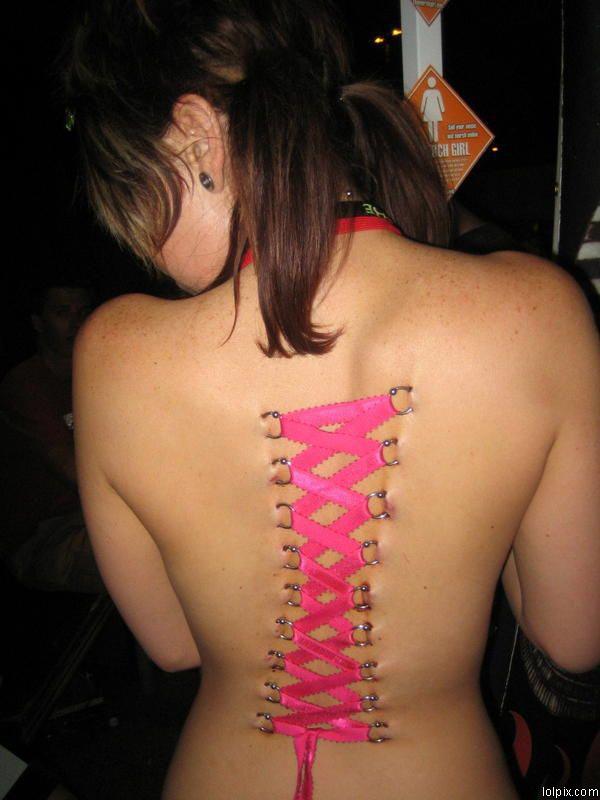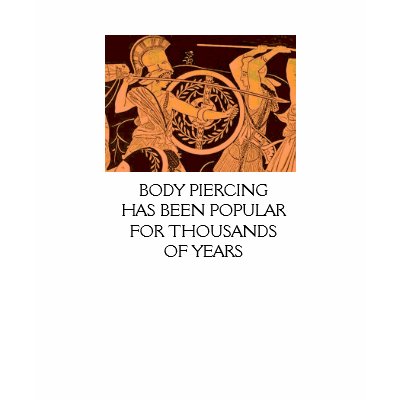Contemporary body piercing practices emphasize the use of safe body piercing materials, frequently utilizing specialized tools developed for the purpose. Body piercing is an invasive procedure with some risks, including allergic reaction, infection, excessive scarring and unanticipated physical injuries, but such precautions as sanitary piercing procedures and careful aftercare are emphasized to minimize the likelihood of encountering serious problems. The healing time required for a body piercing may vary widely according to placement, from as little as a month for some genital piercings to as much as two full years for the navel.
Body adornment has only recently become a subject of serious scholarly research by archaeologists, who have been hampered in studying body piercing by a sparsity of primary sources. Early records rarely discussed the use of piercings or their meaning, and while jewellery is common among grave goods, the deterioration of the flesh that it once adorned makes it difficult to discern how the jewellery may have been used. Also, the modern record has been infiltrated with the 20th century inventions of piercing enthusiast Doug Malloy. In the 1960s and 1970s, Malloy marketed contemporary body piercing by giving it the patina of history. His pamphlet Body & Genital Piercing in Brief included such commonly reproduced urban legends as the notion that Prince Albert invented the piercing that shares his name in order to tame the appearance of his large penis in tight trousers and that Roman centurions attached their capes to nipple piercings. Some of Malloy's myths are reprinted as fact in subsequently published histories of piercing.
Body adornment has only recently become a subject of serious scholarly research by archaeologists, who have been hampered in studying body piercing by a sparsity of primary sources. Early records rarely discussed the use of piercings or their meaning, and while jewellery is common among grave goods, the deterioration of the flesh that it once adorned makes it difficult to discern how the jewellery may have been used. Also, the modern record has been infiltrated with the 20th century inventions of piercing enthusiast Doug Malloy. In the 1960s and 1970s, Malloy marketed contemporary body piercing by giving it the patina of history. His pamphlet Body & Genital Piercing in Brief included such commonly reproduced urban legends as the notion that Prince Albert invented the piercing that shares his name in order to tame the appearance of his large penis in tight trousers and that Roman centurions attached their capes to nipple piercings. Some of Malloy's myths are reprinted as fact in subsequently published histories of piercing.
















No comments:
Post a Comment